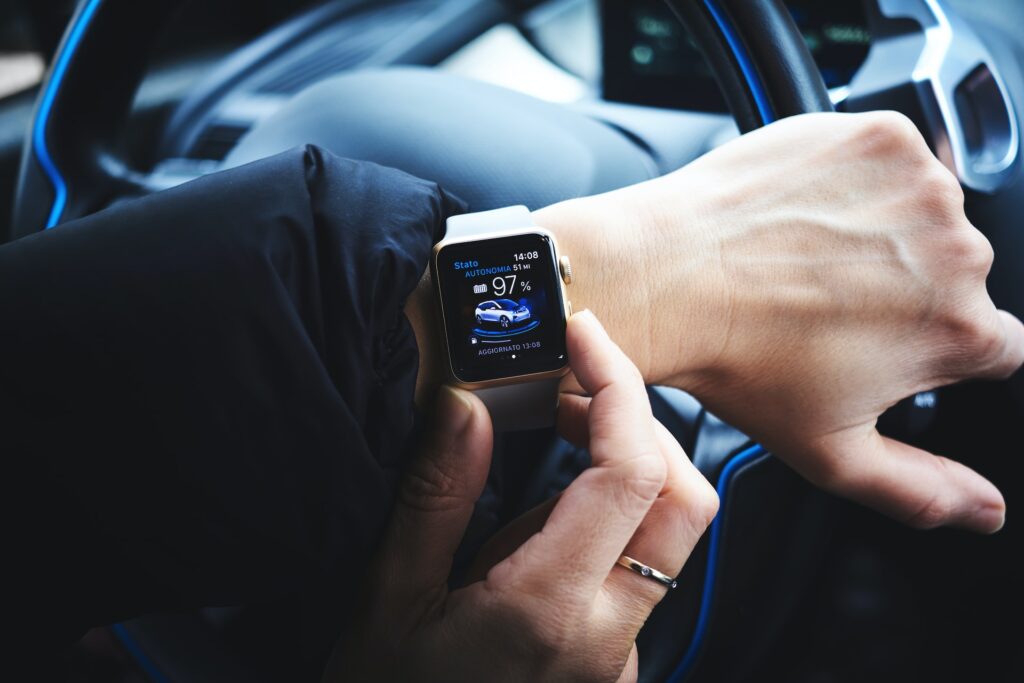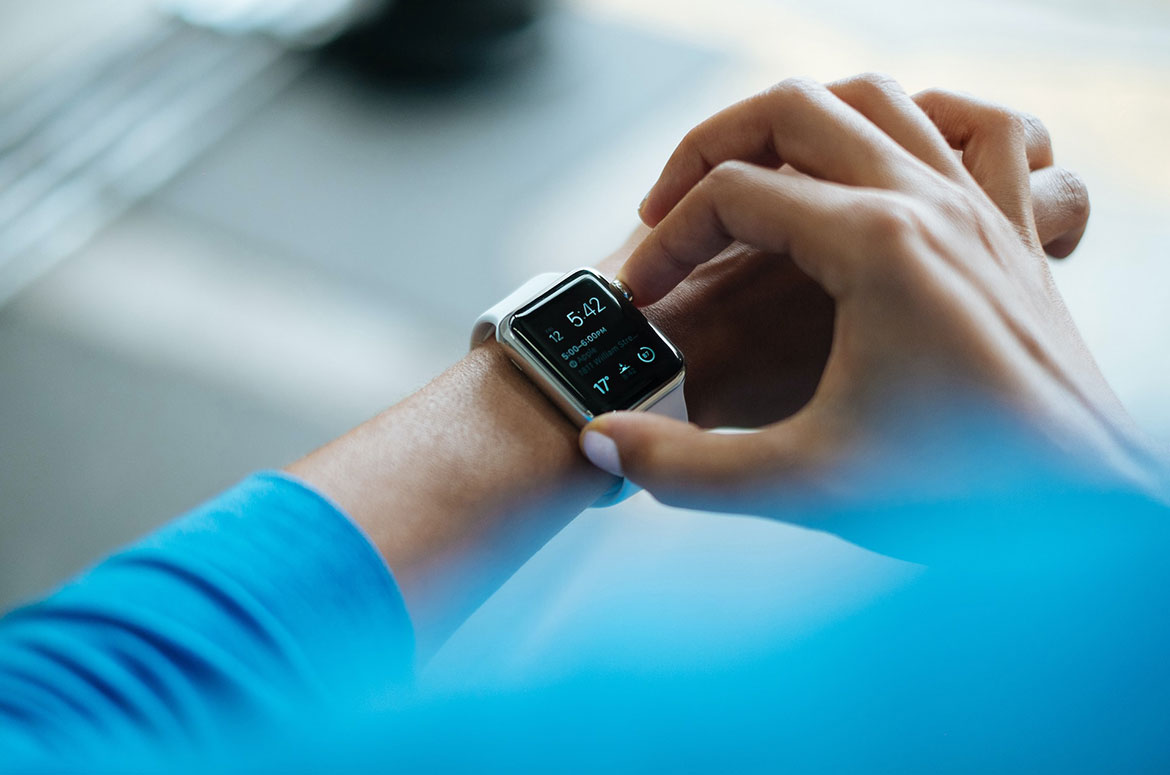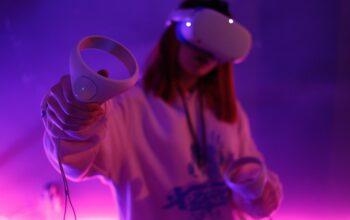Which Option Describes Wearable Technology?
Wearable technology has emerged as a revolutionary force in the realm of gadgets, seamlessly integrating into our daily lives. From smartwatches to fitness trackers, these devices have redefined how we interact with technology. In this article, we will explore the diverse landscape of wearable technology, understanding its types, functionalities, applications, and the impact it has on various aspects of our lives.
In a world dominated by technology, wearables have carved their niche, becoming an indispensable part of our daily routines. Wearable technology refers to electronic devices that can be worn on the body, often equipped with sensors and connectivity features. These devices go beyond the conventional scope of smartphones and laptops, offering a more personalized and integrated experience.
Definition of Wearable Technology
Wearable technology encompasses a wide array of devices designed to be worn, such as smartwatches, fitness trackers, augmented reality (AR) glasses, and even smart clothing. The primary objective is to provide users with real-time information, enhance convenience, and monitor various aspects of their lives.
Brief History of Wearable Tech
The roots of wearable technology can be traced back to the early experiments with calculators worn on the wrist. However, it was the advent of fitness trackers and smartwatches in the 21st century that marked the true beginning of the wearable revolution. Since then, the market has witnessed exponential growth, with constant innovations and improvements.
Types of Wearable Technology
Smartwatches
Smartwatches have evolved from simple timekeeping devices to sophisticated gadgets that can track health metrics, receive notifications, and even make calls. Brands like Apple, Samsung, and Fitbit have set the benchmark in this category.
Fitness Trackers
Fitness trackers focus on monitoring physical activity, sleep patterns, and health metrics. They have become integral tools for individuals striving for a healthier lifestyle.
Augmented Reality (AR) Glasses
AR glasses overlay digital information onto the physical world, opening up possibilities in gaming, navigation, and professional fields.
Smart Clothing
Incorporating sensors into clothing items, smart clothing is designed for various applications, including health monitoring and performance enhancement.
Health Monitoring Devices
Wearable devices dedicated to health monitoring, such as glucose monitors and ECG trackers, play a crucial role in preventive healthcare.
How Wearable Technology Works
Sensors and Data Collection
At the core of wearable technology are sensors that gather data related to movement, biometrics, and environmental factors. These sensors enable the device to provide personalized insights.
Connectivity Features
Wearables often come with Bluetooth or Wi-Fi capabilities, allowing seamless integration with smartphones and other devices. This connectivity enhances the functionality and utility of wearables.
Integration with Smartphones
Most wearable devices sync with smartphones, creating a holistic digital ecosystem. This integration enables users to receive notifications, answer calls, and manage apps directly from their wearable devices.

Popular Wearable Technology Brands
Apple
Apple’s Apple Watch has become a symbol of technological sophistication, offering a plethora of features from fitness tracking to ECG monitoring.
Samsung
Samsung’s Galaxy Watch series combines style with substance, catering to both fashion-conscious users and tech enthusiasts.
Fitbit
Fitbit specializes in fitness trackers, providing users with detailed insights into their physical activity, sleep patterns, and overall health.
Google’s foray into wearables includes the acquisition of Fitbit, signaling the tech giant’s commitment to the growing wearable market.
Applications of Wearable Technology
Fitness and Health Tracking
Wearable devices play a pivotal role in promoting a healthy lifestyle by monitoring physical activity, heart rate, and sleep patterns.
AR glasses and smartwatches equipped with GPS functionalities offer seamless navigation, making them valuable companions for travelers.
Communication and Notifications
Receive calls, messages, and app notifications directly on your wrist, reducing the need to constantly check your smartphone.
Augmented Reality Applications
AR glasses unlock a world of possibilities, from immersive gaming experiences to hands-free professional applications.
Stay ahead of the tech curve with the latest news, reviews, and insights. Follow us on Google News for updates!
Benefits of Using Wearable Technology
Improved Health and Fitness
Wearable devices serve as personal health assistants, encouraging users to stay active, monitor their vitals, and make informed decisions about their well-being.
Increased Productivity
With quick access to notifications and essential information, wearables enhance productivity by minimizing the need to constantly reach for a smartphone.
Convenience in Daily Life
Wearables simplify daily tasks, from making contactless payments to controlling smart home devices, all with a simple gesture or voice command.
Enhanced User Experience
The seamless integration of wearables into daily life contributes to an enhanced overall user experience, blending technology with comfort.
Challenges and Concerns
Privacy Issues
The collection of personal health and location data raises concerns about privacy and the potential misuse of sensitive information.
Security Concerns
As wearables become more interconnected, the risk of cybersecurity threats and data breaches increases, necessitating robust security measures.
Health-Related Debates
While health monitoring devices offer valuable insights, the accuracy and reliability of the data generated can be a topic of debate among healthcare professionals.
Future Trends in Wearable Technology
Advancements in Health Monitoring
Expect future wearables to feature more advanced health monitoring capabilities, potentially leading to proactive healthcare solutions.
Integration with Artificial Intelligence
The synergy between wearable technology and artificial intelligence is poised to revolutionize personalization and user interactions.
Fashion and Style Innovations
As technology becomes more ingrained in our lives, wearables will not only be functional but also aesthetically pleasing, seamlessly blending with fashion trends.
Making the Right Choice
Factors to Consider When Buying Wearable Tech
Consider your lifestyle, fitness goals, and specific needs when choosing a wearable device to ensure it aligns with your preferences.
Matching the Device with Lifestyle
Whether you’re a fitness enthusiast, a professional, or a fashion-conscious individual, there’s a wearable device designed to complement your lifestyle.
Real-Life Examples and Success Stories
Impact on Personal Fitness Journeys
Countless individuals have transformed their lives with the help of wearable fitness trackers, achieving their health and fitness goals.
Transformative Experiences in Professional Settings
Wearable technology has found applications in various professional fields, from healthcare to logistics, streamlining processes and improving efficiency.
Inspirational Stories of Individuals
Explore stories of individuals who overcame challenges and achieved success with the support of wearable technology, serving as inspiration for others.
XI. Wearable Technology and the Future of Work
Impacts on the Workplace
Wearable devices have the potential to enhance workplace efficiency, from monitoring employee well-being to optimizing logistics.
Potential Benefits for Employees and Employers
The integration of wearables into the workplace can result in improved employee health, increased productivity, and streamlined operations, benefiting both employees and employers.
Social Implications of Wearable Tech
Changing Social Dynamics
The widespread adoption of wearables influences how individuals interact with each other, blurring the lines between the physical and digital realms.
Cultural Shifts
As wearables become more prevalent, they contribute to cultural shifts, shaping societal norms and expectations.
Consumer Reviews and Feedback
Positive Experiences
Users share positive experiences of how wearables have positively impacted their lives, from achieving fitness goals to staying connected effortlessly.
Common Challenges and How to Overcome Them
Explore common challenges faced by users, such as battery life concerns and data accuracy issues, along with practical solutions to overcome these challenges.
The Environmental Aspect
Sustainability in Wearable Technology
As the demand for wearables rises, there is a growing emphasis on creating sustainable and eco-friendly devices to minimize the environmental impact.
Conclusion
In conclusion, wearable technology has transcended its initial novelty to become an integral part of our modern lifestyle. From improving health and fitness to reshaping the way we work, wearables have far-reaching implications. As technology continues to advance, the future of wearable tech holds exciting possibilities, promising innovations that will further integrate these devices into the fabric of our daily lives.
What are wearable devices used for? Can they truly enhance our daily lives?
Wearable devices serve diverse purposes, enhancing daily life in significant ways. Primarily, they are used for health and fitness tracking, providing real-time insights into physical activity, heart rate, and sleep patterns. This contributes to a proactive approach to health.
Wearables also excel in seamless communication, delivering notifications for messages and calls directly to the user’s device, promoting accessibility. Moreover, advanced wearables with augmented reality features create immersive experiences, adding a layer of entertainment and utility to daily routines.
Why is wearable technology important? How does it contribute to the advancement of our society?
Wearable technology holds paramount importance in advancing both individual well-being and societal progress. Its impact on health is profound, enabling individuals to monitor and manage their health proactively. Wearables facilitate remote patient monitoring, revolutionizing healthcare. The devices also foster connectivity, breaking down barriers in communication and collaboration, leading to a more interconnected society.
In research and development, wearables provide invaluable data for medical studies, consumer behavior analysis, and technological advancements. In essence, wearable technology is vital for improving health outcomes, enhancing connectivity, and driving societal advancements through data-driven insights.



